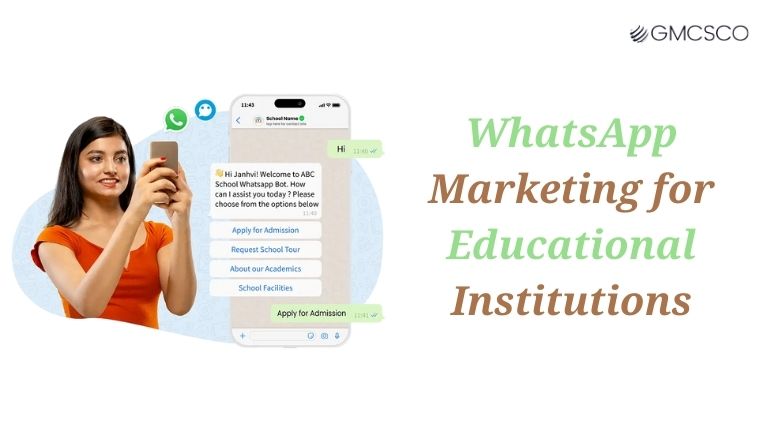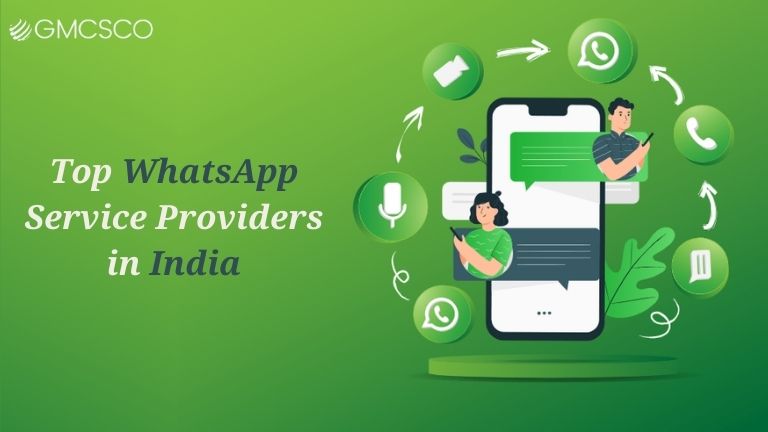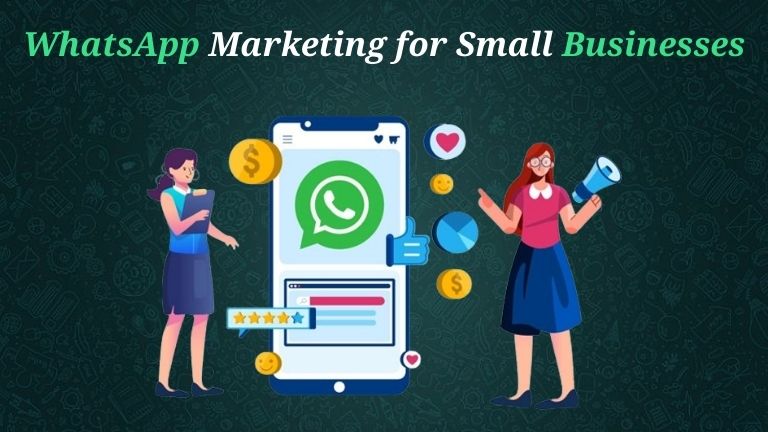WhatsApp Marketing for Educational Institutions
Introduction Communication is paramount in a forever changing educational landscape. WhatsApp for Education is changing the way schools and colleges communicate, providing you with a simple, real-time and low-cost solution. In a time when internet users around the world total 3 + billion, WhatsApp Marketing for Education is the game changer for schools, colleges, and training institutes around the world, including tech hub like HSR Layout, Bangalore. With a digital marketing company in HSR Layout as your partner, you will be able to project your institute over WhatsApp Business for Education. This article reveals how WhatsApp Marketing for Institute enhances engagement, operations and admissions, and actionable tips specific to the Indian education industry. Why You Need Whatsapp Marketing for Education in 2025 Education is a unique industry with unique challenges: handling inquiries, nurturing leads, keeping the lines of communication open. Indian Education is dealing with all that thanks to WhatsApp Marketing for Education in India using the 98% open rate of the platform and the real-time messaging. Unlike Emails that often remain unread, WhatsApp messages are read within few minutes, perfect for time-sensitive updates and personalized engagement. A digital marketing firm in HSR Layout can make use of WhatsApp Business API Services to speed up their tasks and save time, and be more efficient. Advantages of Using WhatsApp for Education Immediate Communication: Instantly report the latest course, event, or deadline news. Cheap: Save money compared to old methods such as SMS or flyers. High Engagement: With an 85% class retention of WhatsApp over email, the level of engagement goes through roof! Automation: Utilize WhatsApp Business API Services to automate routine questions and requests. Also Read WhatsApp Marketing for Healthcare How the Education Industry Benefits from WhatsApp Marketing Cutting Edge Admissions with WhatsApp Business for Education Releasing the stress on everyone involved in the admissions process; the applicant and the staff. WhatsApp marketing for Institute makes it easier by automated chatbots to respond for queries on courses, fees, deadlines. For instance, a future student who asks, “What are the fees?” can get a quick reply including a course list without manual tasks. A Whatsapp Business API Agency HSR Layout will be adept at integrating these chatbots with CRM systems and enable smooth lead-handling. Actionable Tip: Nurture leads with drip campaigns containing messages such as “Applications close soon!” or “Come to our open house!” to boost conversions. Real-Time Student and Parent Involvement WhatsApp Marketing for Education Bigger connections with Personalized messages. Schools can use it to remind learners about exams, share study resources or get instant feedback. A Bangalore-based university leveraged WhatsApp Business for Education which helped reduce inquiry response time by 40% thereby increasing student satisfaction. Building a partnership with an SEO company in Bangalore – who can assure that your ‘WhatsApp campaigns’ rise higher for a search query (such as “WhatsApp Marketing for education in India”) is your reality check. Actionable Tip: Divide your audience (for example: students and parents) and send more targeted messages to improve engagement ratios. Automation of the Office Side of Things WhatsApp Business API Services automate monotonous processes such as fee notifications, event reminders or application tracking. For instance, a coaching center in HSR Layout can employ WhatsApp Marketing to set automated payment reminders to cut no-shows by 30%. Leading WhatsApp Business API providers in Saudi Arabia and India such as GMCSCO Media Group have scalable products for international schools and universities, which are both compliant and effective. Actionable Tip: Connect WhatsApp to your ERP system to automate tasks and measure engagement. Increasing Enrollment through Targeted Campaigns WhatsApp Marketing for Education Sector in India is more about getting enrollments through targeted broadcasts. “A college might send a message to “Check out our AI-powered courses! “Sign up now and receive 10% discount” to cater to techies. This is where a digital marketing agency in HSR Layout can help, as they are able to manage these campaigns and track open rates and conversions with analytics, with the end result being maximum ROI for your business. Actionable Tip: Take advantage of the catalog feature in WhatsApp, to promote the courses to the students where they can browse and enroll. Reinforcing Support with AI Chatbots For most basic queries like details of courses and exam schedules, AI based chatbots, too, are giving uninterrupted service powered by WhatsApp Business API Services. This helps relieve staff workload and increases student satisfaction. Within a training institute, for an illustration, employing WhatsApp Marketing for Institute triggered engagement up 78% through automation of answers. An SEO company in Bangalore can even optimize your WhatsApp content to rank for high-intent keywords. Takeaway: Tailor chatbots so they match your school’s brand in order to make the experience feel personalized. WhatsApp Marketing Vs Traditional Marketing for Education: A Comparison Table If you would like to compare the different strategies for digital marketing for educational sector through WhatsApp, just go through the table we are sharing here! Feature Feature WhatsApp Marketing for Education Traditional Marketing Reach Global, instant delivery to 3B+ users Limited by medium (flyers, emails) Cost Low-cost, scalable with WhatsApp Business API Services High-cost (printing, ads) Engagement Rate 98% open rate within minutes 20-30% for emails, lower for ads Personalization Highly personalized with AI chatbots Generic, less targeted Automation Advanced via WhatsApp Business for Education Manual, time-consuming Analytics Real-time tracking of open rates, responses Limited, delayed insights Accessibility Available on every smartphone Requires specific platforms Here’s why you should choose a digital marketing company in HSR Layout for WhatsApp Marketing. Businesses flourish in HSR Layout, Bangalore, and the directory of top digital marketing companies in HSR Layout, Bangalore that are experts in WhatsApp Marketing for Education are available there. These organizations know the local education ecosystem and can customize marketing strategies to reach students and parents. By working with an SEO company in Bangalore, your institution can rank better for searches such as “WhatsApp Marketing for Education in India” and take advantage of WhatsApp Business API Services for autoresponders and reporting. Benefits of Local Expertise Market Insights: Get to know Bangalore education industry requirement. Bespoke Solutions: The Customized WhatsApp Marketing for Institute campaigns. Closeness: Seamless communication between strategy sessions in person. How to Begin with WhatsApp Marketing for Education? Opt for a Trusted Provider: Choose WhatsApp Business API providers in Saudi Arabia or India such as GMCSCO Media Group to obtain







